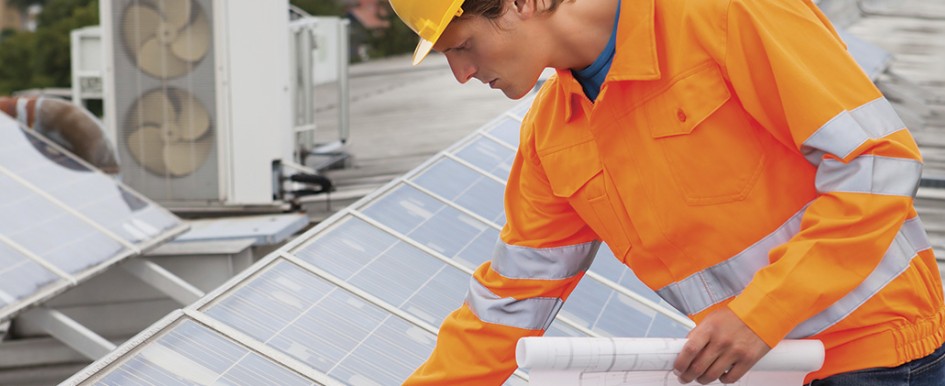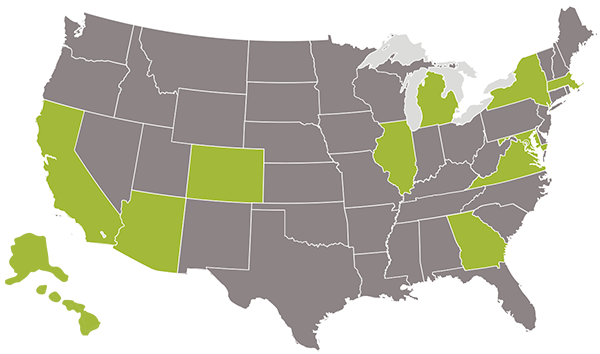
Maybe Kermit the Frog was wrong. It could be easy being green—at least when it comes to buildings. For corporations, schools and hospitals, sustainable building can entail anything from using waterless urinals to creating electricity. However, there are many laws to be aware of pertaining to green building standards if you are striving for LEED certification. The challenges for most construction business owners lie in identifying the risk when a project designed for LEED certification fails to meet that goal and understanding the potential claims and defenses resulting from that failure.
Project owners rarely go green based solely on voluntarily-adopted progressive environmental policies. Instead, an owner’s decision to obtain LEED certification generally results from some economic incentive, such as tax credits; lower operating costs and sustainability benefits; long term secondary value; competitive advantage and ability to charge higher rents; or even favorable zoning revisions.
The LEED system awards points in various categories based on certain performance specifications. The number of points accumulated determines the particular level of LEED certification—Platinum, Gold, Silver or Certified.
Unlike a traditional construction dispute in which the owner and contractor evaluate the as-built condition to the design specifications, for purposes of determining the LEED score, the finished project is evaluated partly on as-built performance. A contractor may complete a building that complies entirely with the project specifications, but, for whatever reason, the building may fail to satisfy the performance requirements or accumulate enough points in non-performance areas to achieve the owner’s desired LEED certification. When attempting to assess liability for failure to reach the desired level, owners and contractors face three additional hurdles:
- A third party determines the score
- Some criteria are completely subjective
- Not all parties to the process are involved in all of the process components
Ramifications to the owner when the building falls short of the desired LEED certification level are very real and may include loss of tax credits, potential default of the lending agreement, breach of zoning approval, higher utility bills, stigma and diminution in value. The owner will be looking to recoup those losses from someone, and often that someone can end up being you.
Waiver of Consequential Damages Clauses
Many American Institute of Architect (AIA) contracts include a provision in which the contractor and owner each waive consequential damages against the other. For example, in Article 21.8 of AIA Document A107-2007, the vague definition of “consequential damages” in many jurisdictions fails to provide any certainty on the issue for either party to the transaction. A well-advised contractor will be looking to modify the form language to specifically exclude any and all damages of any kind arising from a failure to reach the desired LEED level. Understandably, the owner may resist such exculpatory language; in which case the contractor’s unsuccessful attempt to include such restrictions will likely result in the owner persuasively arguing the intent of the parties runs in its favor. The contractor asked and the owner refused the modification. Therefore, by going forward with the project, the contractor implicitly agreed LEED damages are not excluded in any general waiver of consequential damage language. Downstream contracts should also be modified according to the extent the owner and the contractor agree on express language after careful review and discussion.
In 2011, the AIA released Document D503-2011 entitled, “Guide to Sustainable Projects.” The AIA specifically noted the “rapidly evolving area” of green construction and the importance of developing “contracts that are specifically tailored to these new or expanded roles, responsibilities and risks. This new AIA document expressly addresses various concerns implicated by green building and incorporates suggested modifications to existing AIA form documents. In particular, the guide states, “Because it is unlikely that any one of the project participants will be solely responsible for providing a sustainable building or achieving a sustainability certification, liability for consequential damages may be difficult to allocate. For this reason, users are cautioned against executing any AIA contract document that has been modified to eliminate the mutual waiver of consequential damages language.”
Economic Waste
A contractor may assume that, having constructed an otherwise impeccable structure in accordance with plans and specifications, no court of law would require it to rip out a fully functioning HVAC system simply because the utility usage slightly exceeds that allowed for a particular LEED certification. However, based on the holding of the Arizona Court of Appeals in Fairway Builders v. Malouf Towers, 124 Ariz. 242, 603 P.2d 513 (1979), such an assumption is a risky proposition. The owner hired a contractor to build a new office high-rise in downtown Phoenix.
One design aspect of the building included a “Marblecrete” decorative finish applied to the exterior of the building. The finish failed LEED certification, and the trial court held that the proper fix required tearing down the walls to the studs in the areas of failure, and essentially starting over. The contractor argued the finish served a purely aesthetic function and requiring such replacement constituted economic waste. The Court of Appeals disagreed, stating, “This office building is located on Phoenix’s main street, so that is entirely reasonable for [the owner] to insist that it receive a building with the exterior appearance it contracted for.” Id., at 254, 524. Following that same logic, an owner could argue the substantive performance requirements associated with a LEED standard to justify full cost of repair damages, and not just the diminution in value of the building comparing the sought-for certification with the actual certification.
Spearin Doctrine
The Spearin Doctrine provides that a contractor who constructs the project according to plans and specifications will not be liable for the consequences of defects in those plans and specifications. U.S. v. Spearin, 248 U.S. 132 (1918). The Arizona Supreme Court recognized the Spearin Doctrine in Chaney Bldg Co., v. City of Tucson, 148 Ariz. 571, 716 P.2d 28 (1986). However, the doctrine only applies to design specifications, not performance specifications. Willamette Crushing v. Arizona ex rel. Dep’t of Transportation, 188 Ariz. 79, 932 P.2d 1350 (App. 1997). Since, by definition, the LEED standards are performance-based and not specification based, the Spearin Doctrine is not likely to provide a defense to a claim by the owner.
Liquidated Damages
Similar to the “limitation of liability” clauses used by design professionals, a liquidated damages provision in this context would be tied not to delay, but LEED performance following construction. Just as delay damages can be difficult to quantify, the loss to an owner when the building is certified Gold instead of Platinum defies precise calculation. For example, if the owner seeks Platinum certification, but following construction a rating of Gold is awarded, then the contract provides the owner’s damages are X dollars. The problem with this approach is the sheer number of variables involved in determining the LEED certification, and that not all of the parties in the equation—owner, contractor and architect—have equal control over all of them. Therefore, any type of liquidated damages clause would have to contain some language connecting the assessment of damages to the parties’ contribution to the problem.
With green building still in its infancy, extremely few appellate opinions exist providing any meaningful guidance on how to address various issues associated with green building disputes. LEED certification is definitely attainable and doesn’t have to carry the baggage of frequent legal battles. The most meaningful and cost-effective practice is to spend the time up front tailoring the construction contract to your situation, ensuring it spells out your needs in clear and concise detail.
Get The Facts On Going Green
- In 2015, it is estimated that 40-48 percent of new nonresidential construction will be sustainable.
- As of Jan. 1, 2015, more than 3.6 billion square feet of building space is LEED-certified.
- LEED is referenced in project specifications for 71 percent of new projects valued at $51 million and over.
- Areas with the greatest per capita investment in green buildings in the U.S. for 2014 were:

- Washington, D.C.
- Illinois
- Colorado
- Maryland
- Virginia
- Massachusetts
- Hawaii
- California
- Georgia
- Minnesota
- Arizona
- New York
Source: U.S. Green Building Council
